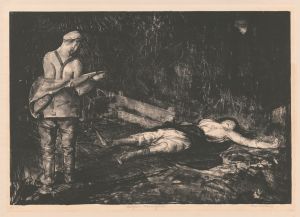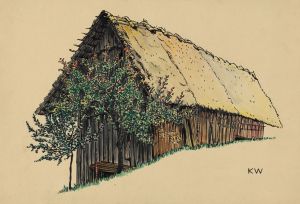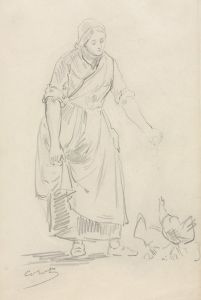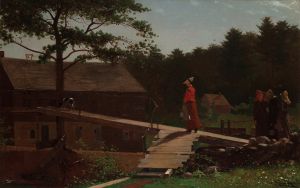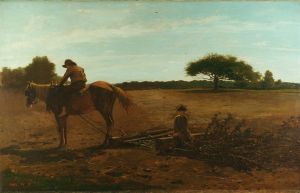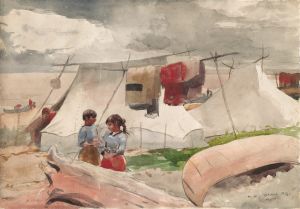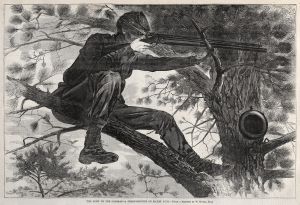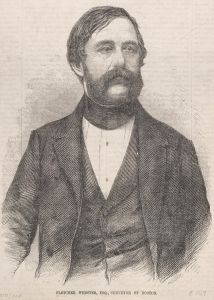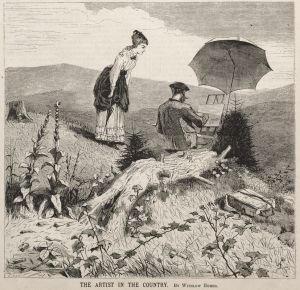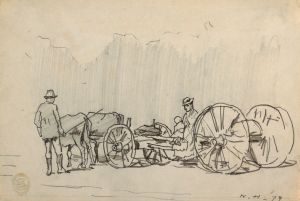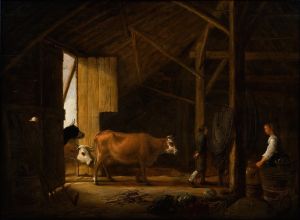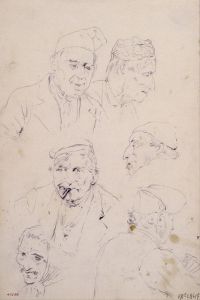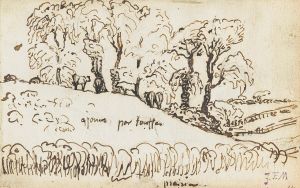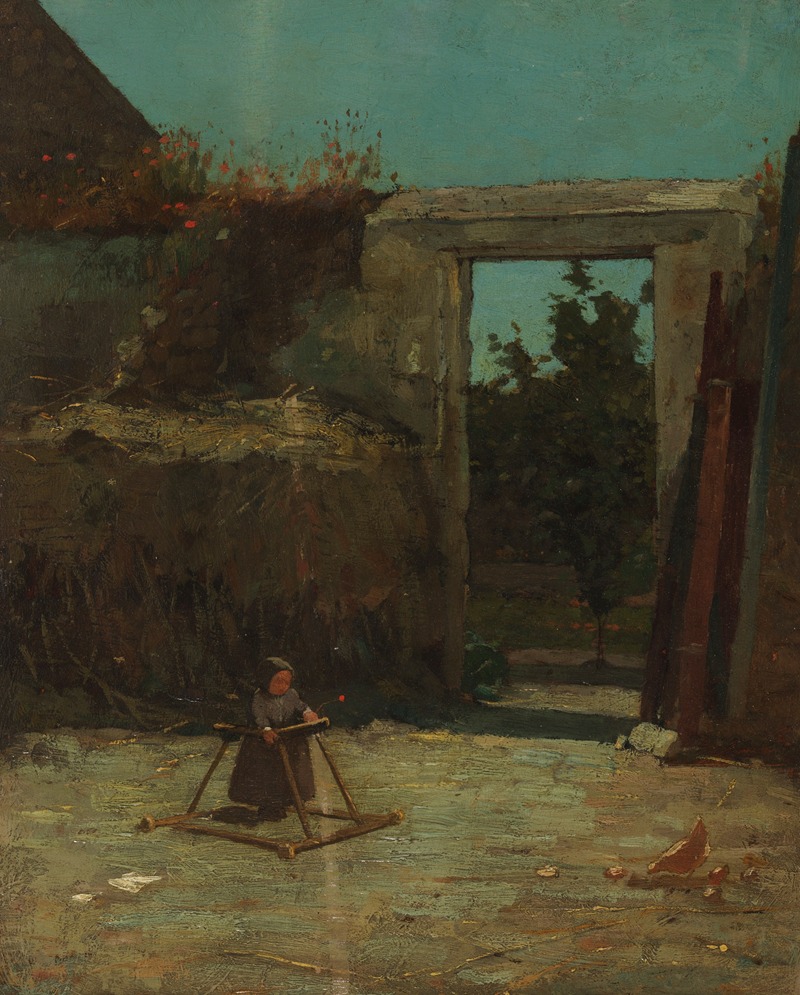
French Farmyard
A hand-painted replica of Winslow Homer’s masterpiece French Farmyard, meticulously crafted by professional artists to capture the true essence of the original. Each piece is created with museum-quality canvas and rare mineral pigments, carefully painted by experienced artists with delicate brushstrokes and rich, layered colors to perfectly recreate the texture of the original artwork. Unlike machine-printed reproductions, this hand-painted version brings the painting to life, infused with the artist’s emotions and skill in every stroke. Whether for personal collection or home decoration, it instantly elevates the artistic atmosphere of any space.
Winslow Homer, one of the most prominent American painters of the 19th century, is best known for his depictions of American life and landscapes. Among his lesser-known works is French Farmyard, a watercolor painting created during his time in France. This artwork was completed in 1867, during Homer’s stay in the rural village of Cernay-la-Ville, located about 30 miles southwest of Paris. Homer traveled to France shortly after the end of the American Civil War, seeking to refine his artistic skills and immerse himself in the European art scene.
French Farmyard is a watercolor on paper that captures a quiet, rustic scene of rural life in France. The painting depicts a small farmyard with chickens scattered across the foreground, surrounded by simple farm buildings. The composition reflects Homer’s interest in everyday life and his ability to convey a sense of tranquility and authenticity. The muted color palette and loose brushwork are characteristic of Homer’s early watercolors, showcasing his developing mastery of the medium.
During his time in France, Homer was influenced by the Barbizon School, a group of French painters who focused on naturalistic depictions of rural landscapes and peasant life. While Homer did not formally associate with the Barbizon artists, their emphasis on simplicity and realism resonated with his own artistic sensibilities. French Farmyard reflects this influence, as it emphasizes the unembellished beauty of rural life without romanticizing or idealizing the scene.
Homer’s time in France was relatively brief, lasting less than a year, but it had a lasting impact on his artistic development. He returned to the United States in late 1867, bringing with him a renewed focus on watercolor as a medium and a deeper appreciation for the subtleties of light and atmosphere. These elements would become hallmarks of his later works.
Today, French Farmyard is recognized as an example of Homer’s early exploration of watercolor and his ability to capture the essence of a place with simplicity and precision. The painting is part of the collection at the Sterling and Francine Clark Art Institute in Williamstown, Massachusetts, where it is occasionally displayed alongside other works by Homer and his contemporaries.





